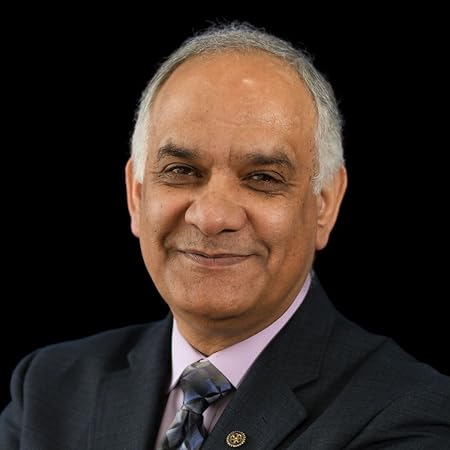Just a few weeks back, in this article on the Blog, we shared the unwelcome news that the Social Security Administration was changing their rules about verifying personal identification over the phone. The upshot of the new rules was that tens of thousands of people applying for benefits or making changes would henceforth be required to visit a Social Security office in person.
The chaos triggered by this sudden announcement of a policy that was supposed to take effect next week was immediate – and the angry response was loud indeed.
Now it appears the officials at SSA have blinked and the new policy requiring office visits has been put on indefinite hold. We saw a barrage of articles this past week about this policy reversal, including this report from Reuters, written by journalist Nathan Layne. Let’s look into the story. Odds are it will affect you, or someone you love. (We also suspect, given the turmoil at SSA these days, that this policy shift may not represent the final word.)
Plans to Abandon Many Phone Services Triggers Backlash
Layne writes, “The U.S. Social Security Administration abandoned plans to end phone services for retirees that would have started on Monday, following a growing outcry from advocates who warned that the changes could cause chaos and further strain the agency.” The policy reversal was abrupt and little explanation was provided, says Reuters.
Layne’s article explains the sheer scope of Social Security: $1.4 trillion in annual benefits to 73 million Americans, most of them retired. Recent data suggests that fully two-thirds of U.S. seniors count on the program for half or more of their retirement income. That means the effects of benefit disruption would be catastrophic for millions of retirees.
“Telephone Remains a Viable Option,” Say Sheepish Officials
After abruptly announcing the restrictive phone policy just two weeks ago, on Wednesday of last week officials just as abruptly reversed course.
The agency said it would “allow all claim types to be completed over the telephone,” from April 14, the date that the phone option was due to be cut, Reuters reports. “Telephone remains a viable option to the public,” the SSA said in an emailed statement to the news agency.
According to Layne, the Social Security Administration had announced just two weeks ago that, beginning Monday, April 21st, “all retirees, widows and children would have to visit a field office if they were unable to verify their identity and apply for benefits online.” The backlash was swift and fierce.
More Than 75,000 Added Office Visits Weekly
The lack of forethought shown in the original policy announcement seems remarkable, experts say. According to Layne, “The SSA had estimated that canceling the phone option would prompt 75,000 to 85,000 more people per week to seek the help of a person at field offices, leading to roughly 4 million additional office visits annually.”
But, as we reported in our Blog article, the agency lacks capacity to deal with so many in-person visits. We quoted a USA Today article stating that “SSA offices do not currently have the resources to handle an influx of in-person appointments of this size.” We also noted that a spate of recently-announced office closures would only make the problem worse.
Lack of Online Access Complicated by Long Travel Distance
The Reuters article gives a damning overview of the problem. It quotes research from the Center on Budget and Policy Priorities (described as “a left-leaning think tank”) which found that, for at least 6 million seniors, visiting a Social Security field office would require a round trip of nearly 50 miles or more. This, Reuters adds, highlights “the potential burden on a demographic that may struggle to file claims online.”
Haynes writes, “[senior] advocates and Democratic lawmakers warned that requiring potentially millions of retirees to visit an office could swamp the agency at a time when it is losing staff and its computer systems are plagued with outages.”
Grass Roots Response Credited for the Policy Backtrack
In Reuters’ view, the reason for the change was simple: a loud outcry from an outraged public.
Haynes spoke with Richard Fiesta, executive director of the Alliance for Retired Americans, who said that “the reversal was the result of its members calling their elected officials and joining protests against the changes. Fiesta also noted the negative view of the so-called reforms being instituted by Elon Musk’s Department of Government Efficiency.
“From the moment DOGE announced its dangerous plan to eliminate SSA telephone services, our members sprang into action,” Fiesta said. He also echoed the widely-held view that cutting phone service would have “placed an unreasonable burden on vulnerable people” and overwhelmed understaffed field offices.
Security Concerns Cited as Basis for Original SSA Policy
Supposedly, says the Reuters article, the original policy to curtail phone service was intended to improve security and reduce identity theft. “The SSA, which had cited concerns about fraud when it initially announced the plan to curtail phone services, said on Wednesday it would conduct a fraud check on all benefit claims made over the telephone and flag those deemed risky,” Haynes writes.
In those cases where security issues can’t be resolved by phone or online, a visit to a field office will still he required.
“Individuals that are flagged would be required to perform in-person ID proofing for the claim to be further processed,” the SSA said in a statement. “Individuals who are not flagged will be able to complete their claim without any in-person requirements.”
Rajiv Nagaich – Your Retirement Planning Coach and Guide
The long-awaited book by Rajiv Nagaich, called Your Retirement: Dream or Disaster, has been released and is now available to the public. Retirement: Dream or Disaster joins Rajiv’s ground-breaking DVD series and workbook, Master Your Future, as a powerful planning tool in your retirement toolbox. As a friend of AgingOptions, we know you’ll want to get your copy and spread the word.
You’ve heard Rajiv say it repeatedly: 70 percent of retirement plans will fail. If you know someone whose retirement turned into a nightmare when they were forced into a nursing home, went broke paying for care, or became a burden to their families – and you want to make sure it doesn’t happen to you – then this book is must-read.
Through stories, examples, and personal insights, Rajiv takes us along on his journey of expanding awareness about a problem that few are willing to talk about, yet it’s one that results in millions of Americans sleepwalking their way into their worst nightmares about aging. Rajiv lays bare the shortcomings of traditional retirement planning advice, exposes the biases many professionals have about what is best for older adults, and much more.
Rajiv then offers a solution: LifePlanning, his groundbreaking approach to retirement planning. Rajiv explains the essential planning steps and, most importantly, how to develop the framework for these elements to work in concert toward your most deeply held retirement goals.
Your retirement can be the exciting and fulfilling life you’ve always wanted it to be. Start by reading and sharing Rajiv’s important message. And remember, Age On, everyone!
(originally reported at www.reuters.com)


